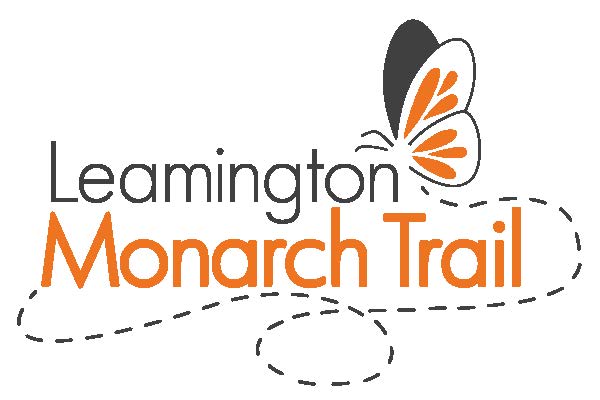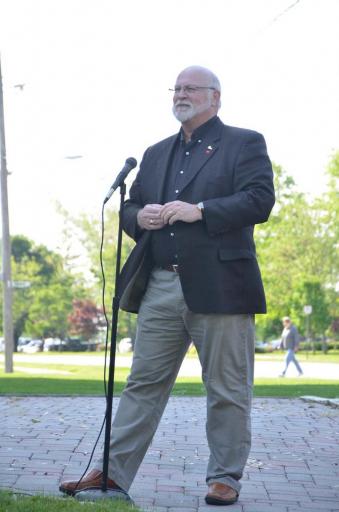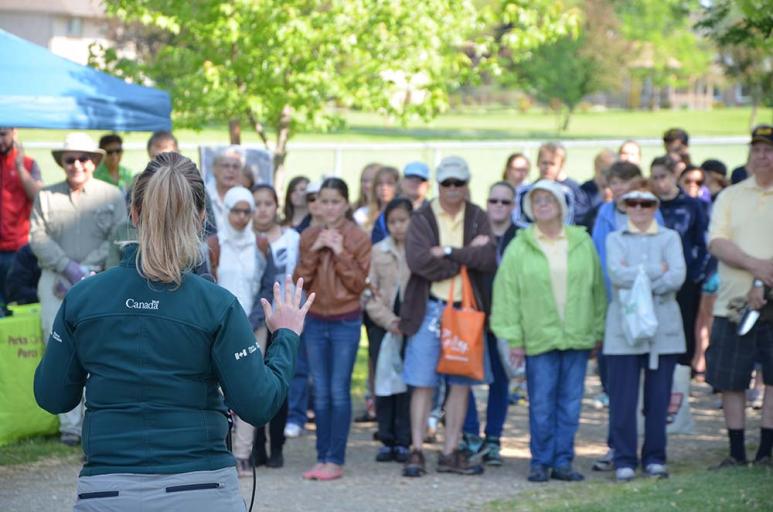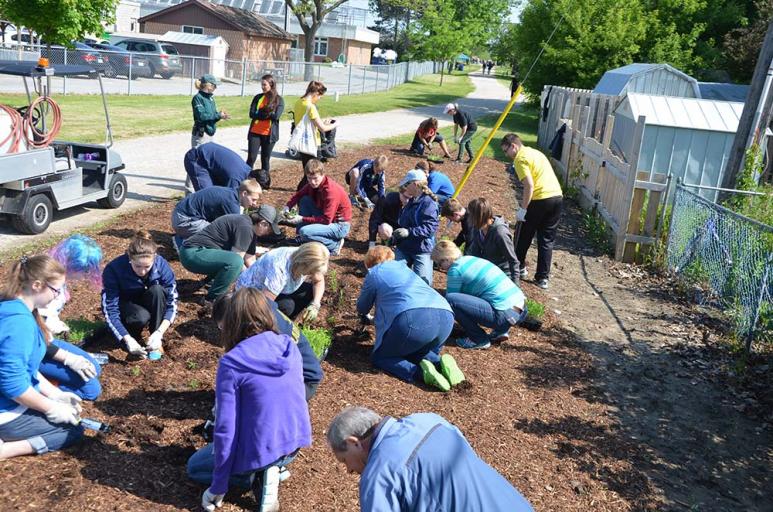


Visit the Erie Coast EcoTrail in Carolinian Canada and Grow Wild in Leamington
Immerse Yourself in Butterfly Habitat
“It is the Municipality’s vision that this project will help restore and support the large number of monarch butterflies that migrate through the Leamington area and create a natural spectacle to be enjoyed by residents and visitors alike”
Peter Neufeld, Chief Administrative Officer, Municipality of Leamington
Welcome to Canada’s Deep South
Monarch on Purple Aster. Photo: Jim Flynn - Not for reproduction
Here on Canada’s south coast in Leamington, millions of Monarch butterflies prepare for their long journey to Mexico.
Standing on this trail, you are connected to a migration route across North America. The Monarchs use Point Pelee National Park as a launching point. They lay eggs here in Leamington, rest and refuel for their flight over Lake Erie.
But Monarch numbers are dwindling. Habitat loss is a major factor in their decline.
Luckily, Leamington cares.
Why are these gardens different?

Mayor Peterson Welcomes Volunteers. Photo: Parks Canada
The Municipality of Leamington is helping migrating Monarch butterflies by growing Canadian wildflowers. Local native plant species were carefully selected to match Leamington’s unique natural ecosystems.
The Leamington Monarch Trail gardens will provide food and habitat for migrating birds and butterflies, especially monarch butterflies, to refuel before continuing on their long journey.
The Monarch Trail opened in June 2015, launching a multi-phase collaboration between the Municipality and Parks Canada to grow healthy habitats for migrating birds and butterflies.
Sustaining Leamington's Unique Heritage
This EcoTrail habitat supports more than Monarchs. It supports unique local heritage.
Essex is a biodiversity hotspot for Canada meaning it is home to more wild and rare plants and animals than most other places in the country. So adding local wildflowers, shrubs and trees to the landscape supports a rich diversity of wildlife.
As you explore the EcoTrail, you are getting a glimpse into how a caring community works together to help save the fascinating biodiversity of the Lake Erie coast. Point Pelee National Park protects some of this habitat but cannot do it alone.
A network of supporting habitat is crucial to sustain butterflies, birds and other wildlife as they move through the landscape. From backyards and back fields, to EcoTrails and parks, every little bit helps.

Local volunteers plant native grasses and wildflowers to support butterflies. Photo: Parks Canada
Saving the Lake Erie Sandspit Savannah Ecosystem
This EcoTrail also supports unique habitats like the Lake Erie Sandspit Savannah Ecosystem that is home to many rare species.
Located 50 km south-east of Windsor, Ontario, Point Pelee National Park is one of the smallest national parks. Interwoven throughout the Park's 20-square-kilometre landscape is a patchwork of marsh, forest, fields, and beaches, home to a rich diversity of plant and animal life – where important conservation work takes place on a daily basis.
Supported by the National Conservation Plan, the Parks Canada team of conservation experts at Point Pelee National Park are hard at work restoring the Lake Erie Sandspit Savannah ecosystem which includes restoring several species at risk trees and improving habitat for birds, plants and insects.
Click the SHARE tab above to share your local sightings and stories!
Click the ACT tab above to join the action at this EcoTrail!
Explore the Erie Coast EcoTrail
Be a Monarch Champion
Plant your own butterfly garden with Canadian wildflowers. Select local plant species to match Leamington’s unique natural ecosystems. Tip: Watch out for wildflower mixes that are not local. They can do more harm than good.
Click EXPLORE tab above to explore this EcoTrail!
Click the SHARE tab above to share your local sightings and stories!
Plant a Milkweed, Save a Butterfly, Join a Festival
What better way to connect with nature than to help provide critical food and habitat for migrating birds and butterflies where they can rest and refuel before continuing on their long journey!
Visit the EcoTrail during an annual festival hosted by the Municipality including local civic organizations, native plant growers, horticultural groups, naturalist associations, artists and students.
The second annual event is held during Environment Week on Tuesday, June 7, 2016 along the second phase of the trail between Seacliff Drive and Pulford Avenue.
EcoTrails provide amazing opportunities for Canadians to connect with nature, and for Parks Canada to work with community stakeholders like the Municipality of Leamington.
Volunteers Gather to Save Butterfly

Valerie Minelga from Parks Canada explains the planting process. Photo: Parks Canada
During the June 2015 launch event, over 80 volunteers attended to help representatives from the Municipality and Parks Canada plant butterfly habitat, along the first phase of the trail.
They planted Canadian wildflowers and grasses, including milkweed in eight large gardens along a 0.5 km stretch of walking trail from Robson Road to Seacliff Drive. First, they removed invasive and non-native species.
Dave Van Kesteren, Member of Parliament for Chatham-Kent—Essex joined in to restore important habitat for birds and butterflies, including monarchs, during Environment Week (May 30 - June 6, 2015).
The Municipality and Point Pelee National Park continue to work together on this multi-phase project that will line gardens of milkweed, Canadian wildflowers and supporting plants and along approximately 5 kms of urban trails within Leamington’s 17 km trail system.
"Because Parks Canada is always exploring innovative ways to engage Canadians in conservation and restoration projects, we’re really excited here at Point Pelee National Park to be working with the Municipality of Leamington to connect Canadians to nature. The native grasses, wildflowers and milkweed planted along the Municipality’s walking trails will not only attract birds and butterflies, but also offer Canadians natural spaces to connect with nature" said Karen Linauskas, Superintendent, Point Pelee National Park.
Click EXPLORE tab above to explore this EcoTrail!
Click the SHARE tab above to share your local sightings and stories!




